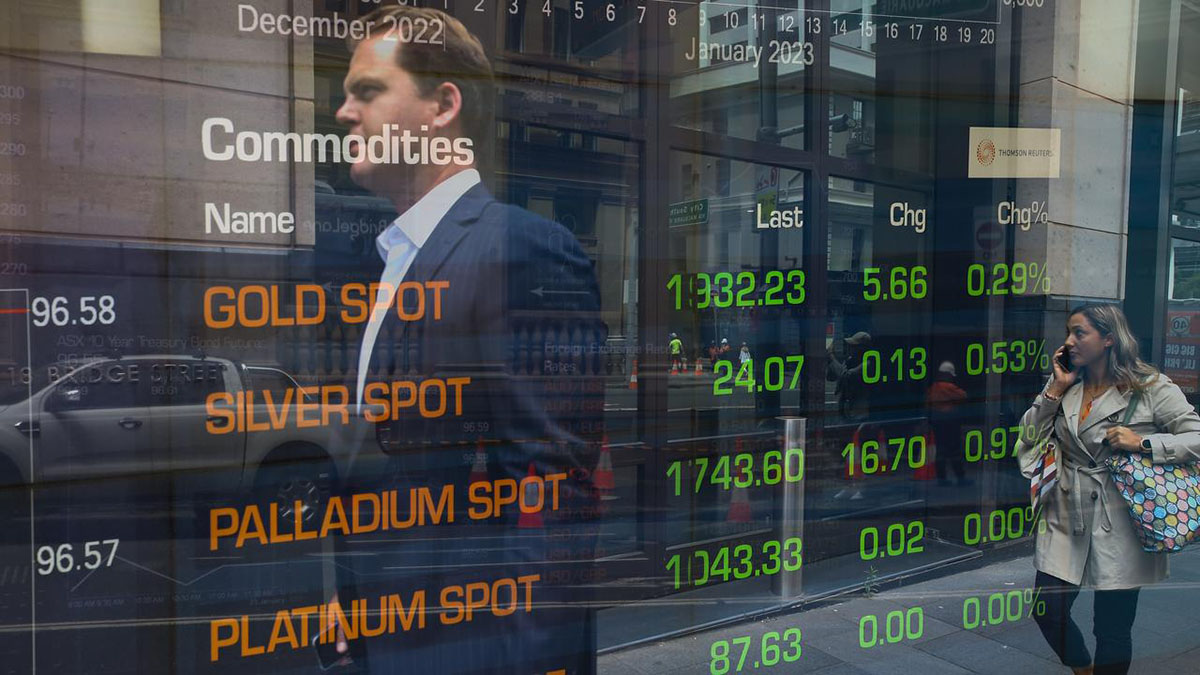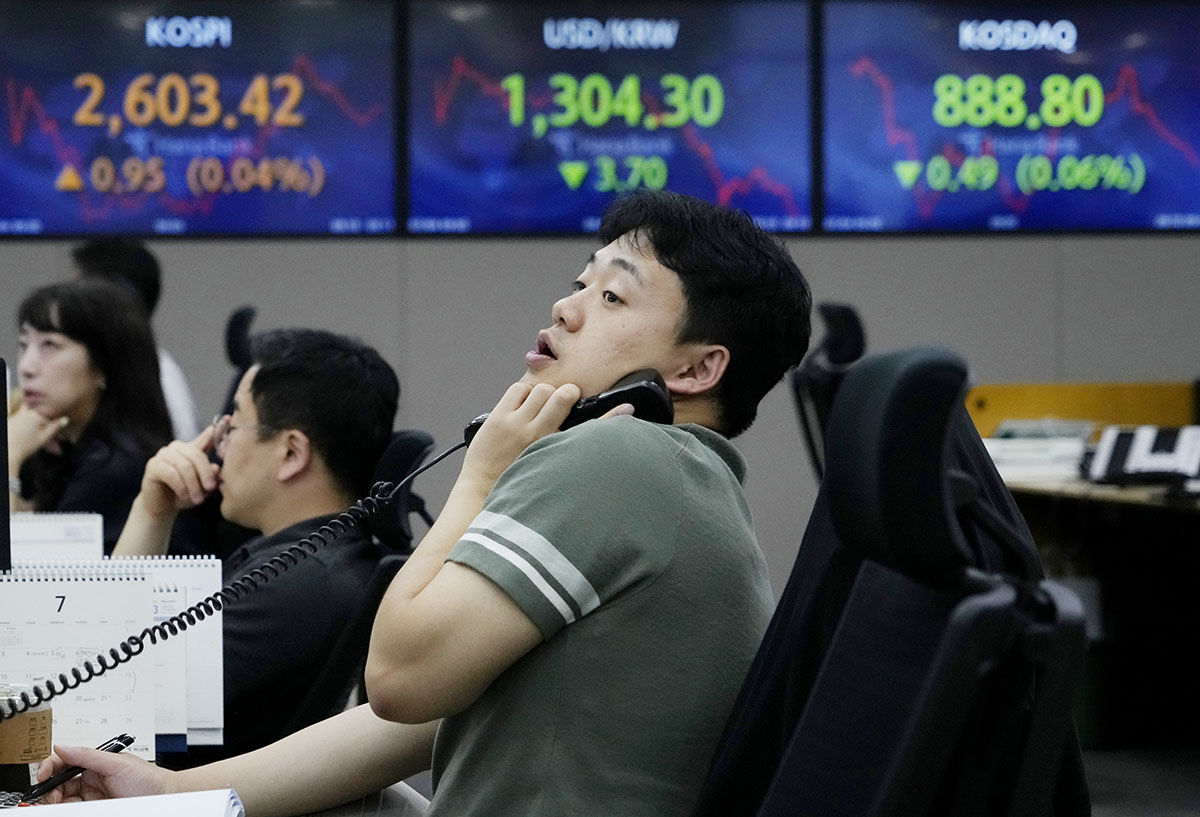Home>Finance>What Time Does The Australian Stock Market Open


Finance
What Time Does The Australian Stock Market Open
Published: November 24, 2023
Looking for the opening time of the Australian Stock Market? Stay updated with our comprehensive finance guide.
(Many of the links in this article redirect to a specific reviewed product. Your purchase of these products through affiliate links helps to generate commission for LiveWell, at no extra cost. Learn more)
Table of Contents
Introduction
The Australian stock market, also known as the Australian Securities Exchange (ASX), is a prominent global financial market that plays a vital role in the country’s economy. It provides a platform for individuals and institutions to buy and sell shares, derivatives, and other securities. Understanding the opening hours of the Australian stock market is crucial for traders and investors who want to stay ahead of market trends and capitalize on investment opportunities.
In this article, we will dive into the details of when the Australian stock market opens and the various trading sessions that take place throughout the day. We will explore pre-market and post-market trading, as well as the impact of public holidays on trading activity.
By knowing the opening times of the Australian stock market, traders can plan their activities accordingly and align their strategies with market fluctuations. It is essential to have a clear understanding of the market hours to maximize trading opportunities and make informed investment decisions.
Now, let’s delve into the specific trading hours of the Australian stock market and explore the different sessions that shape the trading day.
Market Opening Times
The Australian stock market opens at 10:00 AM local time and operates on weekdays from Monday to Friday. While this is the official market opening time, it is important to note that there are several different trading sessions within the overall trading day.
The pre-market session begins at 7:00 AM and runs until 10:00 AM. During this time, traders and investors can place orders, but the actual trading does not begin until the market opens at 10:00 AM. The pre-market session allows participants to react to overnight news or events that may impact the market.
The main trading session, also known as the normal trading session, starts at 10:00 AM and concludes at 4:00 PM. This is when the majority of the trade volumes occur, and it is the most active time of the trading day. Market participants can buy and sell shares, derivatives, and other securities during this session.
After the close of the normal trading session, there is a post-market session that begins at 4:10 PM and runs until 5:00 PM. During this time, traders can still place orders, but they will be queued for the next trading day. The post-market session is useful for traders who want to react to late-breaking news or events that may impact the market.
It is important to note that the opening times mentioned here are based on the Australian Eastern Standard Time (AEST) or Australian Eastern Daylight Time (AEDT) when daylight saving is in effect. Therefore, individuals who are in different time zones or observe daylight saving in their respective regions should make the necessary adjustments to align their trading activities with the Australian stock market opening times.
Now that we have explored the various trading sessions within the Australian stock market, let’s delve deeper into the trading hours and their significance for traders and investors.
Trading Hours
The trading hours of the Australian stock market are structured into different sessions to provide flexibility and accommodate different trading strategies and participant needs. Let’s take a closer look at the trading hours and their significance:
Normal Trading Session:
The normal trading session, which runs from 10:00 AM to 4:00 PM, is the primary trading period in the Australian stock market. During this time, market participants can actively buy and sell securities. The high trading volumes and liquidity make this session ideal for executing trades with minimal price impact.
Lunch Break:
There is a lunch break between 12:00 PM and 1:00 PM during the normal trading session. This break allows traders and investors to take a pause and reassess market conditions. It is a common practice to analyze news developments and market trends during this time to make informed trading decisions for the remainder of the trading day.
Pre-market Trading:
The pre-market session, which starts at 7:00 AM and ends at 10:00 AM, is an important period for traders to prepare and gauge market sentiment. While actual trading does not occur until the market officially opens at 10:00 AM, participants can place orders during this time. It is valuable for reacting to overnight news or events and adjusting trading strategies accordingly.
Post-market Trading:
The post-market session follows the end of the normal trading session and lasts from 4:10 PM to 5:00 PM. During this time, traders can still place orders, but they will be queued for execution on the next trading day. The post-market session allows participants to react to late-breaking news or events that may impact the market and adjust their trading positions accordingly.
It is worth noting that while the normal trading session provides the most significant activity and trading opportunities, the pre-market and post-market sessions offer valuable periods for adjusting positions, reacting to news, and planning strategies.
Understanding the trading hours and sessions of the Australian stock market is vital for traders and investors to effectively manage their portfolios and take advantage of market movements. By staying informed and aligning their trading activities with the specific market sessions, participants can maximize their chances of success in the Australian stock market.
Now that we have explored the trading hours, let’s dig deeper into pre-market and post-market trading and their significance in the Australian stock market.
Pre-market Trading
The pre-market trading session in the Australian stock market refers to the period before the official market opening at 10:00 AM. It begins at 7:00 AM and lasts until 10:00 AM. Although the actual trading does not commence until the market opens, participants can place orders and assess market conditions during this time.
Pre-market trading offers several benefits for traders and investors. Firstly, it allows participants to react to overnight news or events that may impact the market. Economic data releases, corporate announcements, or geopolitical developments that occur outside regular market hours can have a significant impact on stock prices. Pre-market trading allows traders to respond quickly and adjust their strategies accordingly.
Another advantage of pre-market trading is the opportunity to test trading strategies and gauge market sentiment. By placing orders and closely monitoring price movements during this session, traders can gain insights into how the market might behave when it officially opens. This information can be valuable for making informed trading decisions and capturing early trading opportunities.
It is important to note that not all securities are available for pre-market trading. The ASX has specific criteria for securities to be eligible for pre-market trading, including liquidity and market capitalization requirements. Therefore, it is essential for traders to be aware of the specific securities they can trade during this session.
While pre-market trading can present unique opportunities, it is important to exercise caution. Lower trading volumes during this session can result in wider bid-ask spreads and increased price volatility. It is advisable for traders to use limit orders and carefully consider the potential risks and rewards associated with trading during this time.
Overall, pre-market trading in the Australian stock market provides a valuable window for traders and investors to react to news, test strategies, and assess market conditions before the official market opening. It offers an opportunity to stay ahead of the curve and potentially capitalize on early trading opportunities.
Now that we have explored pre-market trading, let’s move on to the post-market trading session and its significance in the Australian stock market.
Post-market Trading
The post-market trading session in the Australian stock market occurs after the close of the normal trading session, from 4:10 PM to 5:00 PM. While no new trades can be executed during this time, participants have the opportunity to place orders that will be queued for execution on the next trading day.
The post-market session serves several purposes for traders and investors. Firstly, it allows participants to react to late-breaking news or events that occurred after the market closed. Economic data releases, corporate earnings announcements, or global developments can impact market sentiment and potentially influence trading decisions. The post-market session provides a window for traders to evaluate new information and adjust their trading strategies accordingly.
Another benefit of the post-market session is the ability to manage existing positions. Traders can place orders to close out or modify existing positions based on market developments that occur after the close of regular trading hours. This flexibility can be advantageous for those looking to fine-tune their portfolios or take proactive measures to protect their investments.
It is important to note that the liquidity during the post-market session is typically lower compared to the normal trading session. This can result in wider bid-ask spreads and potentially higher price volatility. Therefore, it is crucial for traders to exercise caution and consider the potential risks associated with trading during this time.
Furthermore, it is essential to be aware of any specific rules or restrictions that may apply to post-market trading. The ASX has specific guidelines regarding order types and execution rules during this session. Understanding these rules is crucial for participants to navigate the post-market session effectively.
In summary, the post-market trading session in the Australian stock market allows traders and investors to react to late-breaking news, manage existing positions, and prepare for the next trading day. While the liquidity may be lower compared to the normal trading session, it provides an opportunity for traders to fine-tune their strategies and stay on top of market developments.
Now that we have explored post-market trading, let’s move on to discussing public holidays and their impact on trading closures.
Public Holidays and Trading Closures
Public holidays in Australia have an impact on the trading activity of the Australian stock market. On these holidays, the market is closed, and no trading takes place. It is important for traders and investors to be aware of these holidays as they plan their trading activities and manage their positions.
The ASX publishes a list of public holidays and trading closures well in advance, allowing market participants to prepare accordingly. It is crucial to stay updated with the official holiday schedule to ensure accurate planning and minimize any disruptions to trading strategies.
During public holidays, investors can still place orders, but they will not be executed until the market reopens. It is essential to note that trading activity may experience heightened volume and volatility in the days leading up to and following public holidays as investors adjust their positions and react to any market developments.
Public holidays also affect the settlement of trades. On non-trading days, the settlement process is paused and resumes when the market reopens. This may impact the timing of settlements and the availability of funds for reinvestment or withdrawals.
It is important for traders and investors to factor in the potential impact of public holidays on their trading decisions and risk management strategies. Managing positions, holding adequate cash reserves, and adjusting trading strategies in anticipation of potential market fluctuations can help navigate the effects of public holidays on trading closures.
In summary, public holidays in Australia result in trading closures, and no trading takes place on these days. Staying informed about the holiday schedule and planning accordingly is crucial for traders and investors to effectively manage their trades and mitigate any disruptions caused by trading closures.
Now that we have explored the impact of public holidays on trading closures, let’s conclude our discussion on the opening times of the Australian stock market.
Conclusion
Understanding the opening times and trading sessions of the Australian stock market is essential for traders and investors looking to capitalize on investment opportunities. The market opens at 10:00 AM and operates on weekdays from Monday to Friday. Additionally, there are pre-market and post-market sessions that provide opportunities to react to news and adjust positions outside of normal trading hours.
The pre-market session, which starts at 7:00 AM, allows participants to place orders and assess market conditions before the official market opening. This session is valuable for reacting to overnight news and events. The post-market session, which begins after the close of the normal trading session, allows traders to react to late-breaking news and manage existing positions. The post-market orders are queued for execution on the next trading day.
It is crucial to keep in mind that the trading hours mentioned are based on Australian Eastern Standard Time (AEST) or Australian Eastern Daylight Time (AEDT) when daylight saving is in effect. Adjustments should be made for different time zones or when daylight saving is not observed in their respective regions.
Public holidays in Australia result in trading closures, and no trading takes place on these days. It is important to stay informed about these holidays to plan trading activities and manage positions accordingly.
By being aware of the opening times, trading sessions, and potential trading closures, traders and investors can effectively plan their strategies, take advantage of market opportunities, and mitigate any disruptions caused by market closures or fluctuations.
In conclusion, having a solid understanding of the opening times and trading sessions of the Australian stock market is crucial for success in trading and investing. By staying informed and aligning strategies with specific market sessions, participants can maximize their chances of making profitable trades and navigating the ever-changing financial landscape.














